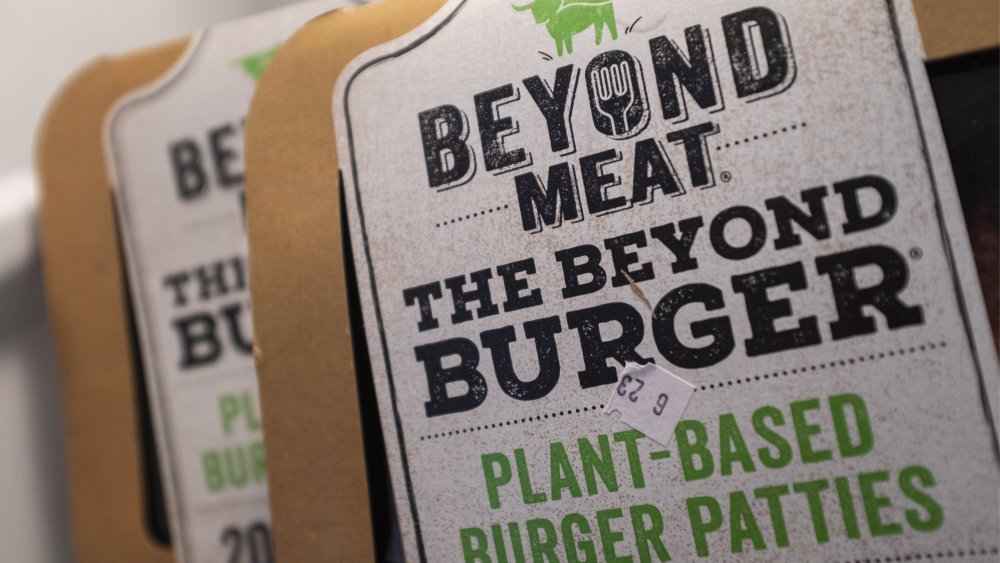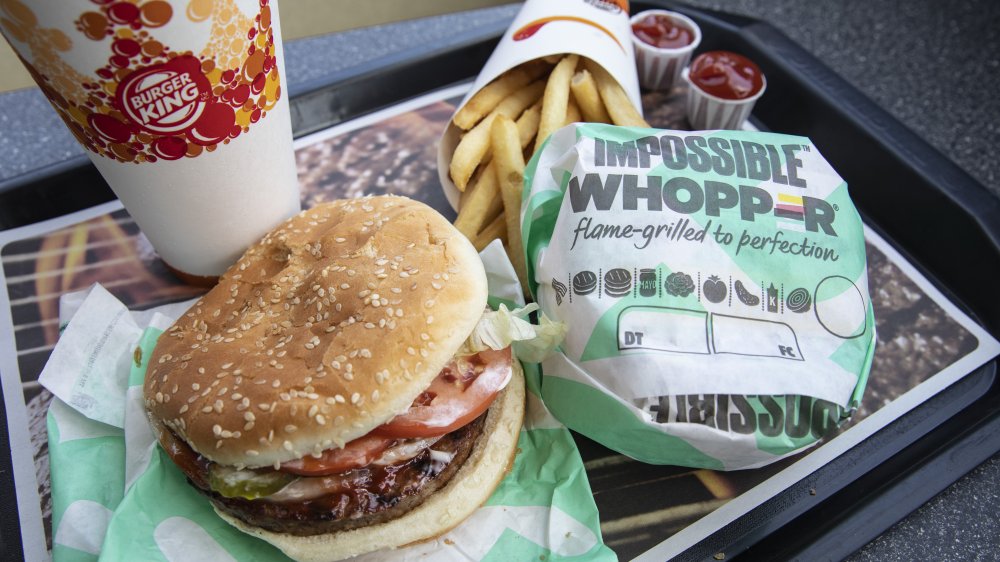The Real Difference Between Impossible Foods And Beyond Meat
Impossible Foods and Beyond Meat are both companies that use plant-based proteins to create meat-like products for home consumers and restaurants. While that sounds pretty similar, there are actually plenty of small differences between the two companies. For example, Beyond Meat is a publicly-traded company, which you buy shares of if you have a few bucks lying around (via Marketwatch). Impossible Foods, on the other hand, hasn't yet announced plans to become publicly traded (via Impossible Foods).
Impossible Foods began as a company which sold predominantly to restaurants (such as Burger King and White Castle), before introducing its product to select grocery stores in 2019 (via CNBC). Beyond Meat's products were available in grocery stores from the beginning but since their founding, they've established partnerships with restaurants and are currently sold in 67,000 locations across the world including chains such as Carl's Jr. and Ralph's (via The Los Angeles Times). Both companies were founded a few years apart: Beyond Meat in 2009 (via Inc.) and Impossible Foods in 2011 (via Impossible Foods).
A difference in ingredients
However, there's one major difference between the two: Beyond Meat uses pea proteins as the main ingredient in its faux meat whereas Impossible Foods uses soy and potato protein — though potato protein makes up less than 2 percent of the product (via CNet). Beyond Meat isolates protein from a variety of different peas and legumes including the garden-variety English pea, mung bean, fava bean, and to a lesser extent, brown rice, in order to form their burgers and other meat substitute products (via Beyond Meat). They also use beet juice to mimic the hemoglobin you would experience in a real burger.
To recreate the "bloodiness" of a burger, instead of beet juice, Impossible Burger uses soy leghemoglobin, a compound found in the roots of the soy plant which is chemically similar to hemoglobin found in animals. It was something of a controversial choice that caused a bit of an uproar (via The Counter) when it came to whether it was a safe ingredient to use.

